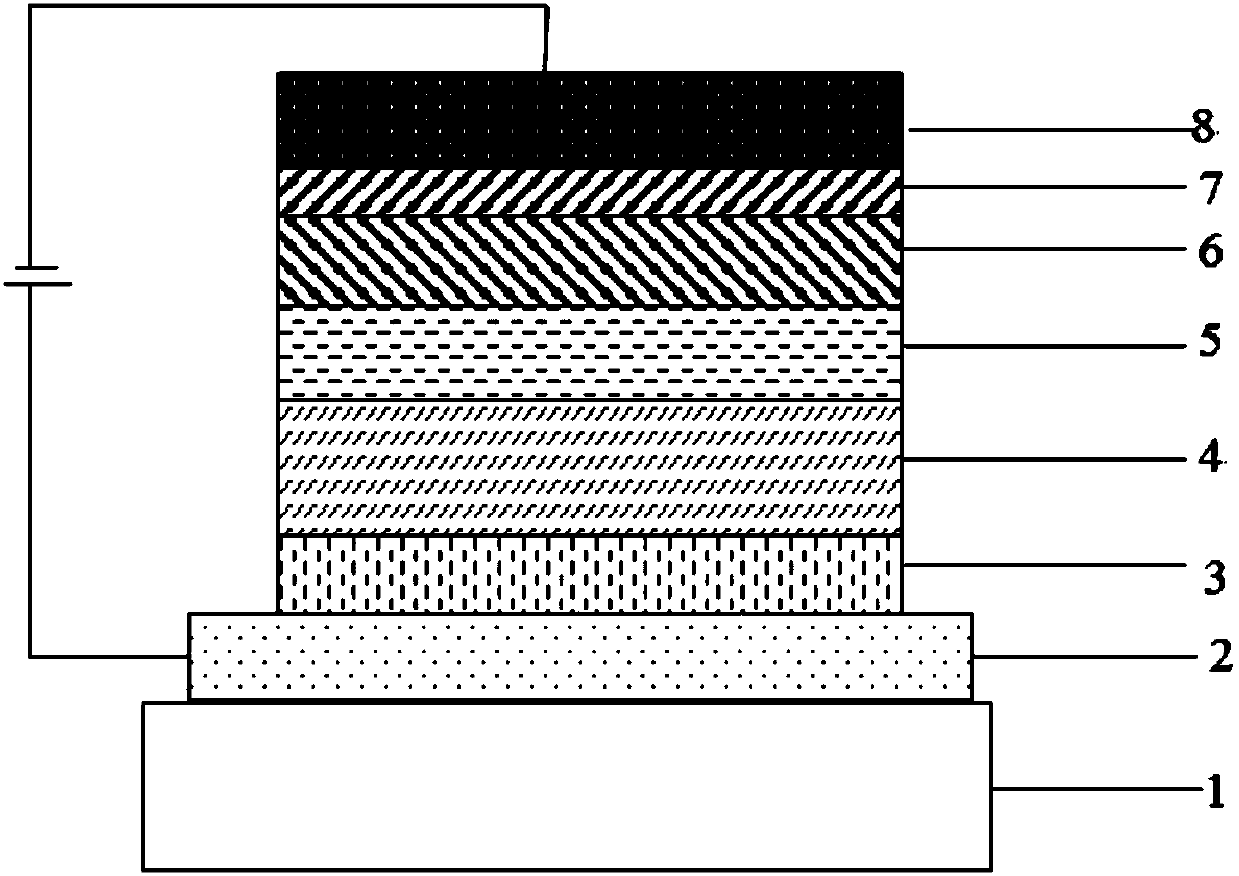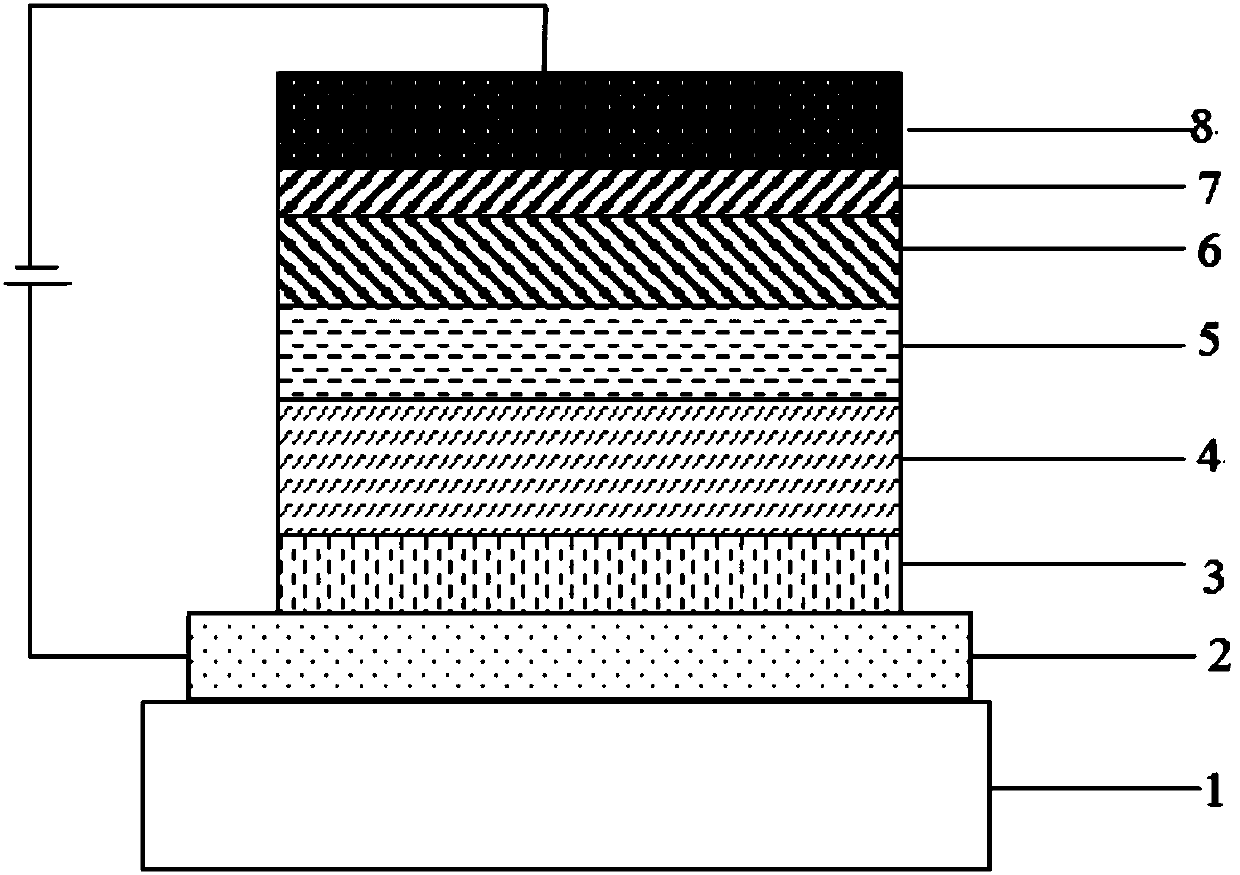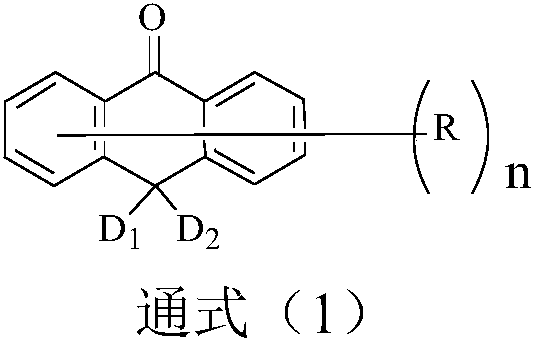Compound taking anthranone as core and application of compound in organic electroluminescent devices
A technology of light-emitting devices and compounds, applied to organic light-emitting diodes, the field of compounds containing anthrone, can solve the problems of low S1 state radiation transition rate, difficult exciton utilization rate, high fluorescence radiation efficiency, efficiency roll-off and the like , to achieve good film formation and fluorescence quantum efficiency, avoid aggregation, and increase the effect of orbital overlap
- Summary
- Abstract
- Description
- Claims
- Application Information
AI Technical Summary
Problems solved by technology
Method used
Image
Examples
Embodiment 1
[0051] Example 1 Compound 1
[0052] The concrete synthetic route of this compound is provided now:
[0053]
[0054] In a 250ml four-necked flask, add 0.01mol 3-(4-bromophenyl)-10,10-dimethyl-10H-anthrone, 0.03mol 9,9-dimethylacridine under nitrogen atmosphere Pyridine, 0.03mol sodium tert-butoxide, 1×10 -4 molPd 2 (dba) 3 , 1×10 - 4 mol of tri-tert-butylphosphine, 150ml of toluene, heated to reflux for 24 hours, sampled and plated, the reaction was complete; naturally cooled, filtered, the filtrate was rotary evaporated, and passed through a silica gel column to obtain the target product with a purity of 95.2% and a yield of 77.00%.
[0055] HPLC-MS: The molecular weight of the material is 505.24, and the measured molecular weight is 505.29.
Embodiment 2
[0056] Example 2 Compound 2
[0057]
[0058] The concrete synthetic route of this compound is provided now:
[0059]
[0060] In a 250ml four-neck flask, under nitrogen atmosphere, add 0.01mol 3-(3-bromophenyl)-10,10-dimethyl-10H-anthrone, 0.03mol phenoxazine, 0.03mol tert-butyl Sodium alkoxide, 1 x 10 -4 mol Pd 2 (dba) 3 , 1×10 -4 mol of tri-tert-butylphosphine, 150ml of toluene, heated to reflux for 24 hours, sampled and plated, the reaction was complete; naturally cooled, filtered, the filtrate was rotary evaporated, and passed through a silica gel column to obtain the target product with a purity of 99.20% and a yield of 73.50%.
[0061] HPLC-MS: The molecular weight of the material is 479.19, and the measured molecular weight is 479.46.
Embodiment 3
[0062] Example 3 Compound 4
[0063]
[0064] The concrete synthetic route of this compound is provided now:
[0065]
[0066] In a 250ml four-necked flask, add 0.01mol 3,6-dibromo-10,10-diphenyl-10H-anthrone, 0.03mol 5-phenylphenazine, 0.03mol tert-butyl Sodium alkoxide, 1 x 10 -4 mol Pd 2 (dba) 3 , 1×10 -4 mol of tri-tert-butylphosphine, 150ml of toluene, heated to reflux for 24 hours, sampling plate, the reaction was complete; naturally cooled, filtered, the filtrate was rotary evaporated, and passed through a silica gel column to obtain the target product with a purity of 99.1% and a yield of 73.60%.
[0067] HPLC-MS: The molecular weight of the material is 858.34, and the measured molecular weight is 858.52.
PUM
| Property | Measurement | Unit |
|---|---|---|
| Film thickness | aaaaa | aaaaa |
Abstract
Description
Claims
Application Information
 Login to View More
Login to View More - R&D
- Intellectual Property
- Life Sciences
- Materials
- Tech Scout
- Unparalleled Data Quality
- Higher Quality Content
- 60% Fewer Hallucinations
Browse by: Latest US Patents, China's latest patents, Technical Efficacy Thesaurus, Application Domain, Technology Topic, Popular Technical Reports.
© 2025 PatSnap. All rights reserved.Legal|Privacy policy|Modern Slavery Act Transparency Statement|Sitemap|About US| Contact US: help@patsnap.com



